Growing Cannabis In A Greenhouse As A Way To Extend Your Growing Season And Maximize Your Yields

While building a cannabis greenhouse may seem like a daunting task, it’s not as hard as you might think. Greenhouses offer a way to utilize many of the advantages of both indoor and outdoor growing while eliminating their shortcomings. However, there are several variables you’ll need to consider before building your own greenhouse. In this article, we’ve outlined everything you need to know about how to grow weed outdoors in a greenhouse.
What Are The Benefits Of Growing Cannabis In A Greenhouse?
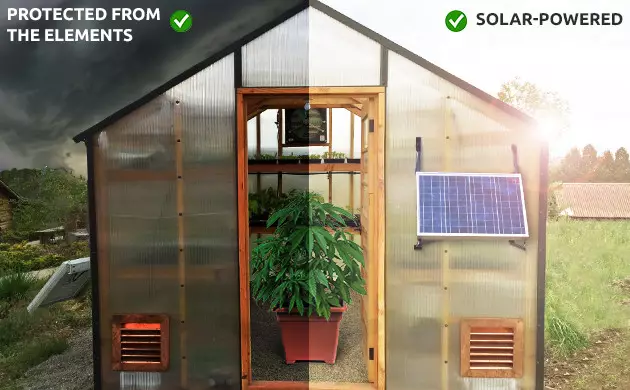
There are two main benefits to growing in a greenhouse. First, you can use the power of the sun instead of grow lights. Second, greenhouses provide a level of protection against outdoor elements. Let’s take a look at each of these advantages.
Solar-Powered
Since they derive power from the sun instead of grow lights, greenhouses cost significantly less to run than indoor grows. The sun is also more powerful than any grow lamp, so your plants will grow taller and produce higher yields. Finally, the spectrum of light the sun provides is much wider than commercial grow lights. The end result is a much higher greenhouse yield compared to an indoor yield.
Protected From The Elements
Outdoor plants are entirely at the mercy of Mother Nature. One powerful storm can spell doom for even the most carefully cultivated outdoor garden. Greenhouses offer a level of protection against wind, precipitation, and even pests.
This protection can even extend the growing season, depending on where you live. Those residing in colder regions around the globe can use greenhouses to protect against frost and snow, allowing them to grow later into the season.
Are There Any Cons Of Growing Cannabis In A Greenhouse?
While greenhouses do offer several advantages, they’re not perfect. The main issues revolve around overheating and stealthy operation. Let’s now examine these aspects in more detail.
Overheating And Excessive Humidity
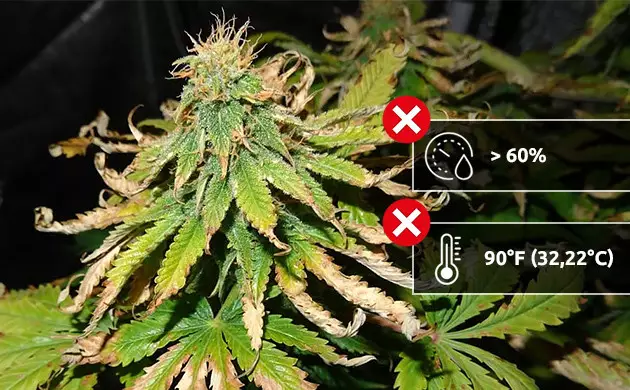
Greenhouses naturally trap heat and humidity. As a result, heat and humidity can spike to unhealthy levels in a greenhouse. For example, sustained temperatures higher than 90 degrees Fahrenheit (32.22 degrees Celsius) are bad for weed plants, and relative humidity should never reach higher than 60% or so. Greenhouses can also develop “hot spots,” where the air temperature is warmer than the rest of the garden.
These issues are solvable, though. Installing dehumidifiers, exhaust vents, and air conditioners can correct environmental issues. You can also solve hot spots by installing fans for air circulation.
Cost
One of the main issues many potential cultivators face when growing weed in a greenhouse is cost. Building a greenhouse is significantly more expensive and time-consuming than just growing your weed outside.
How To Choose A Greenhouse For Cannabis
There are several different types of greenhouses on the market, and you’ll need to know which is the best option for your particular situation. Cold frames, polytunnels, connected greenhouses, and freestanding greenhouses all provide different benefits depending on how you’re growing.
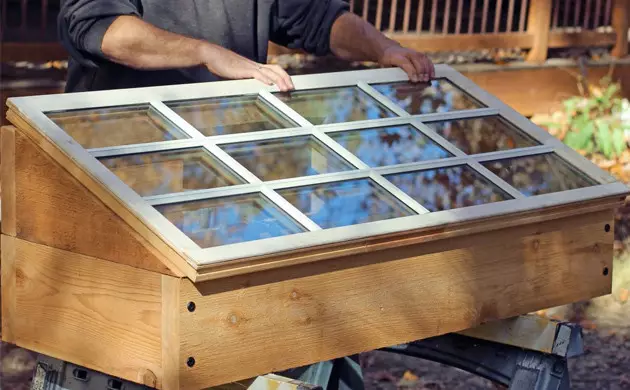
Cold Frames
These are small, temporary greenhouses made from a plastic or wooden frame that connect panes of glass or plastic. They’re fairly inexpensive and you can make them at home fairly easily. You can install air conditioning in cold frames as well, which is essential to successfully grow weed in a greenhouse. However, one drawback is that cold frames only use the sun for heat.
Polytunnels
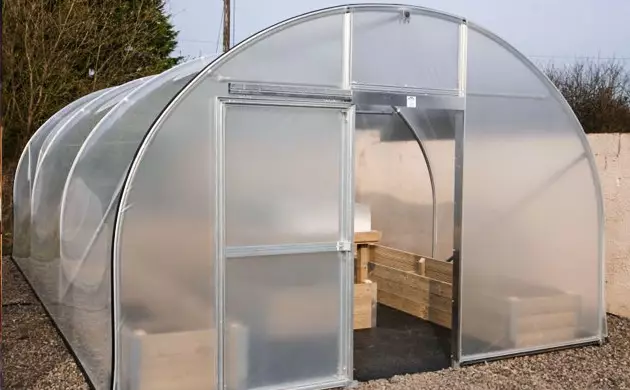
Polytunnels provide another inexpensive greenhouse building technique. They’re common in commercial farming, but smaller options also exist for private use. Polytunnels usually consist of aluminum frames covered by sheets of polyurethane. They’re fairly cheap to make, which is a huge bonus.
Polytunnels are great short-term choices for growers who want to dip their feet into greenhouse cultivation. However, there’s one major drawback to polytunnels: they’re not very durable. You’ll likely need to replace the polyurethane covering of a polytunnel every 3-5 years.
Connected Greenhouses
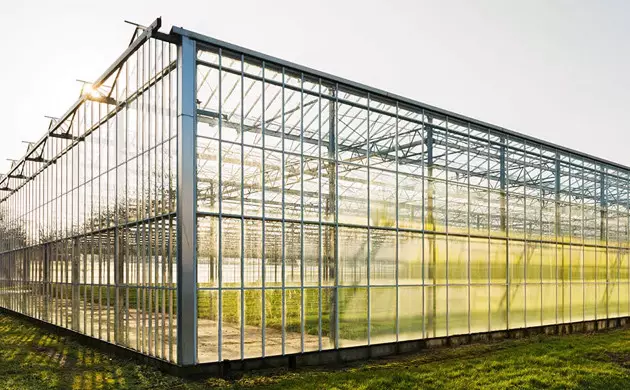
Connected greenhouses are how most large-scale, commercial operations approach their construction. They allow perfect climate control over a large area, which is ideal for dozens or even hundreds of plants. In addition, they’re usually fairly tall, giving plants plenty of vertical space to thrive.
Connected greenhouses are usually made from high-quality construction materials like steel and glass. The construction of these massive behemoths is specialized to make them particularly low-energy, resulting in a highly cost-efficient greenhouse. The main downside to connected greenhouses is their high cost – it’s nearly impossible for a private grower to afford one.
Freestanding Greenhouses
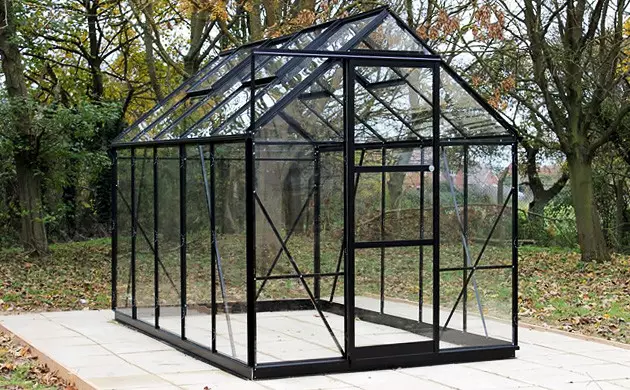
Known by several names including A-frames, even-spans, and detached greenhouses, these structures are some of the most efficient and flexible types available for the prospective grower. They’re a happy medium between quality and cost: they’re likely to last longer than a cold frame or polytunnel, but cost significantly less than a connected greenhouse.
Freestanding greenhouses are generally built from aluminum or wood frames connecting panes of glass or plastic. One major benefit of these types of greenhouses is their flexibility. Because they’re free-standing structures, you can essentially place them anywhere. Freestanding greenhouses are also some of the most readily available on the market, so you’ll have plenty of options.
Attached Greenhouses
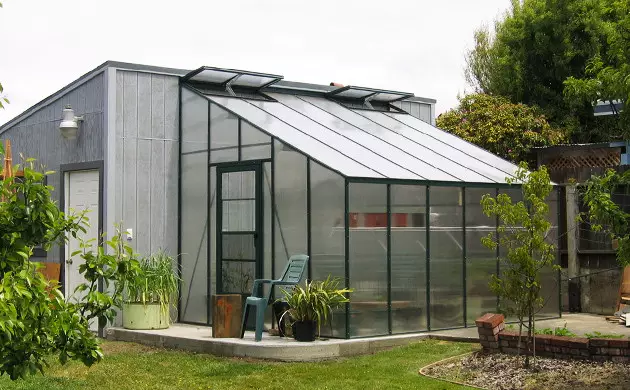
Attached greenhouses are fairly common in suburban settings. Also known as lean-to greenhouses, an attached greenhouse is half of an A-frame connected to the side of a residential building. They’re less expensive than a freestanding greenhouse, since they only use half as much material.
Attached greenhouses generally feature a similar construction to freestanding greenhouses. They’re built from wooden or metal frames that hold glass or plastic frames between them. While they can be cost-effective, attached greenhouses have one major drawback: their location and footprint are limited to the building they’re attached to, which can cut down on the amount of sunlight that the greenhouse receives.
Helpful Addons To A Cannabis Greenhouse
There are some helpful accessories that can maximize the effectiveness of your greenhouse. Hotbeds and ventilation offer the grower a greater level of control over environmental factors in their greenhouses such as temperature and humidity. Diffused covering and darkening systems can change the amount of light coming into a greenhouse to produce different effects.
Hotbeds

Once you add a heating system to a cold frame, it’s now considered a hotbed. Hotbeds are beneficial because a grower can custom-build them to any size. They’re also inexpensive, which is an important consideration for growers on a budget. However, they’re also fairly temporary. As a result, if you’re looking for a long-term greenhouse, a hotbed may not be your best solution.
Diffused Covering
Diffused covering changes the amount of light your panels allow into your greenhouse. Diffused or semi-diffused coverings will block more sunlight, while clear panels will allow full penetration of all the sun’s rays.
While it might seem counter-intuitive, you’ll want to include some diffusing in your coverings. Letting direct sunlight into your greenhouse can burn your plants, and will significantly raise the temperature inside your structure. Diffused coverings will help manage temperature while saving money on climate control systems.
Ventilation
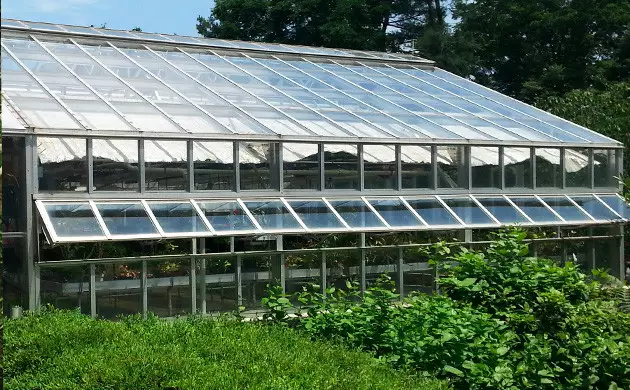
Controlling environmental factors inside a garden is one of a cannabis cultivator’s most important responsibilities. Additionally, maintaining temperature and humidity in a greenhouse is a completely different animal than doing so inside. Ensuring proper ventilation is one of the easiest ways to do this job well.
You can install vents in the siding of your greenhouse. To figure out how much ventilation you’ll need, add up the combined area of all your vents. If it’s one-fifth of the total area of your greenhouse or greater, you’re good to go. You can either install manual vents, which you’ll have to open yourself, or automatic ventilators that run on timers.
Darkening System
Darkening systems allow a grower to control the amount of external light that enters their greenhouses. By controlling this variable, growers can force their plants into either veg or flower phases. Using this trick, greenhouse growers can use darkening systems to increase their total number of harvests.
The one drawback of darkening systems is that they need to work perfectly. They must be able to block out 100% of external light, even during the middle of the day. Otherwise, the plants inside may turn into hermaphrodites.
Growing In Soil Vs. Growing In Containers
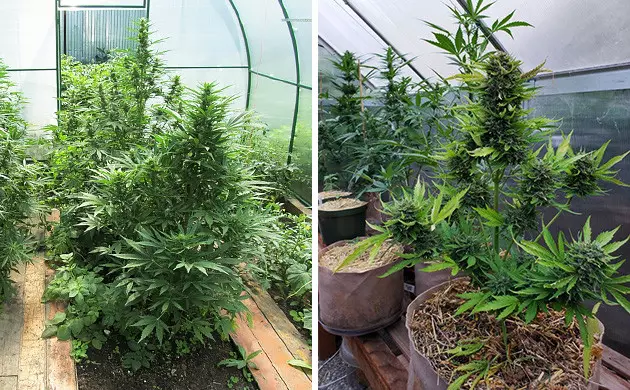
Once you’ve determined what kind of greenhouse you’re going to build, there’s another major bridge to cross. You’ll need to decide whether to grow in some kind of container (like a pot) or directly in the ground. There are two schools of thought surrounding this question.
Pots offer a few advantages. They’re mobile, so you can move your plants if a visitor comes to your greenhouse. You can even remove them from your greenhouse entirely – for example, if one of your plants gets sick.
However, plants in a container will need to be watered more regularly than plants in the ground. As a result, you may need to visit your greenhouse to water or feed nutrient mixes throughout the day. For some cultivators, making daily visits to their greenhouse isn’t possible. Growing directly into the ground allows your plants to survive without you for extended periods of time.
Choosing The Right Genetics For Greenhouse Growing
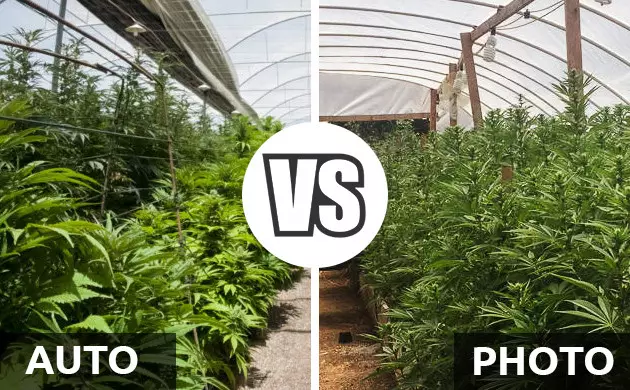
One of the biggest variables affecting greenhouse weed quality is genetics. Autoflowering and photoperiodic strains both have different needs in a greenhouse. You’ll likely want to choose either photoperiodic or autoflower strains and stick to one of these types in your greenhouse. Mixing both together may result in a situation where the photoperiodic strains outcompete the autoflowers for sunlight.
Autoflowers In A Greenhouse
Auto strains love growing in a greenhouse. Many greenhouse growers report exceptionally large harvests from autoflower plants. In addition, autoflower strains usually take less time to reach maturity than photoperiodic strains do. Since they only take about 100 days to fully mature, some growers can reap multiple harvests from autoflower strains in a single growing season.
However, the shorter growing period of autoflower strains means that it’s crucial for all the conditions in your greenhouse to be perfect. Even relatively minor spikes in temperature or humidity may result in significant consequences come harvest time.
Photoperiod Strains In A Greenhouse
Growing photoperiod strains in a greenhouse is similar to growing them outside. They’ll naturally veg until the seasons change, detecting less sunlight each day. At that point, they’ll switch into the flowering phase.
In the Northern Hemisphere, the typical growing season for photoperiodic plants runs from April to October. Many greenhouse growers will germinate their plants as early as March. This actually gives growers a longer growing season than if they were just growing outside. As a result, photoperiod cannabis plants generally grow taller and yield more in greenhouses than they do even in an outdoor grow.
FAQs About Growing Cannabis In A Greenhouse
Now that we’ve covered the basics about growing in a marijuana greenhouse, we’ll answer some miscellaneous questions. You’ll likely need the answers to these questions at some point during your grow process.
How Big Does Cannabis Get In A Greenhouse?
The answer to this question depends on what types of plants you’re growing. Since they fully mature in about 2-3 months regardless of sunlight, autoflowering strains typically won’t grow very tall. However, photoperiodic plants can extend their growing seasons in greenhouses. As a result, they can reach up to 10 feet (3 meters) in height depending on the specific strain. This can come as a shock to many first-time greenhouse growers, many of whom may be newcomers from the low-height world of indoor growing.
What Size Of Greenhouse Should I Choose?
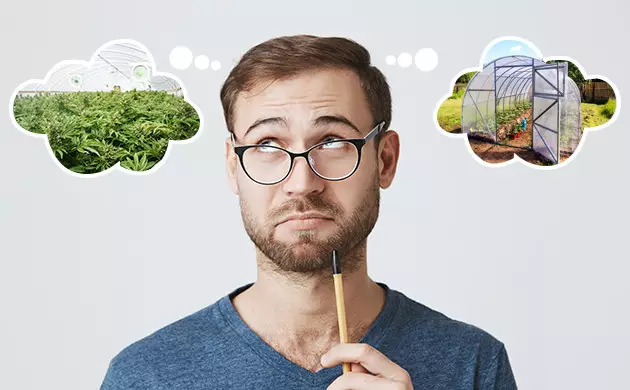
Unless you have some unique circumstances, you’re going to want to build the biggest greenhouse possible. A larger footprint means that you can grow more plants, and more plants ultimately mean higher yields.
Additionally, you’ll want to make sure your greenhouse is tall enough to house your plants. Considering their final height may be 10 feet (3 meters), you’ll want the top of your greenhouse to be a few inches higher than this.
Can I Grow Weed In A Greenhouse During Winter?
One of the major arguments you’ll hear growers use against greenhouses is that they have limited growing seasons. However, these naysayers just don’t know how to grow weed in a greenhouse during winter. By installing grow lights and heating units, greenhouses can extend their growing seasons indefinitely. You’ll also need to use a darkening system to control flowering during the summer months.
Where Should I Put My Greenhouse?
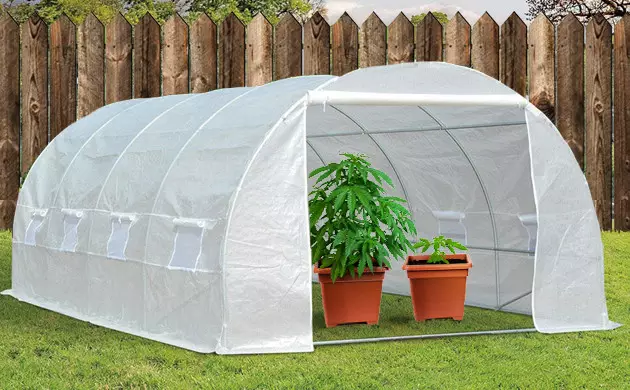
One of the most important factors to consider when deciding on your greenhouse’s location is stealth. You don’t want to put your greenhouse anywhere a neighbor could notice it, so you might want to put it behind tall wooden fencing to deter prying eyes.
You may also want to build your greenhouse close to some kind of water intake, as including running water in your greenhouse can save hours of time spent lugging buckets from the nearest faucet.
Wrap-Up: Growing In Greenhouses
Greenhouses are a great way to add the benefits of both indoor and outdoor grows to your garden while minimizing their drawbacks. Now that you understand all of the most important factors that go into growing in a greenhouse, you’re ready to start. Is there anything else you want to know about greenhouse cannabis growing? Let us know in the comments below!
Herbies Head Shop expressly refuses to support the use, production, or supply of illegal substances. For more details read our Legal Disclaimer.




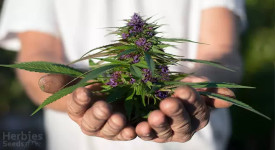
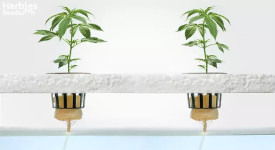




Thank you for leaving a comment for us!
Your feedback will be posted shortly after our moderator checks it.
Please note that we don’t publish reviews that: